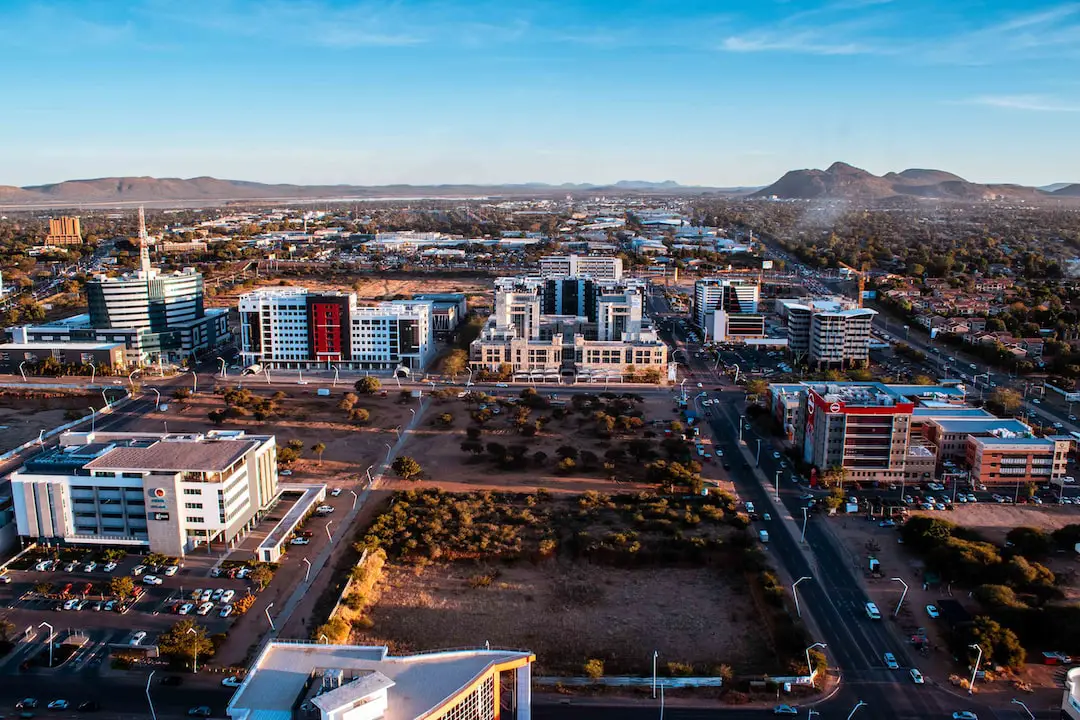
Imagine stepping into a city where the skyline tells a story of cultural fusion, innovation, and a journey through time. Gaborone, the bustling capital of Botswana, is just that—a canvas painted with architectural designs that speak volumes about its past, present, and future. As we stroll through its streets, we’re not just walking on concrete; we’re treading on the pages of a history book that’s alive and still being written.
The city’s architecture is a melting pot, reflecting influences from traditional African motifs to modern, cutting-edge designs. It’s a place where you can gaze at a hut with a thatched roof one moment and marvel at a sleek, glass-walled skyscraper the next. Gaborone’s buildings are more than mere structures; they’re symbols of a nation’s resilience and ambition.
The Roots of Gaborone’s Architectural Identity
Let’s rewind to the early days. Gaborone’s architectural journey began modestly. Traditional huts, known as “mokhoro,” dotted the landscape, crafted from natural materials like mud, thatch, and reeds. These structures were perfectly adapted to the local climate, keeping interiors cool under the scorching African sun.
Fast forward to the post-independence era, and we witness the birth of a new capital in the 1960s. The city’s layout was planned methodically, with influences from international experts. This was the first wave of modernization, bringing with it simple, functional government buildings that prioritized practicality over aesthetics.
A Leap into Modernity
As Botswana’s economy grew, so did its capital’s skyline. The discovery of diamonds brought prosperity and a desire for modern infrastructure. By the 1980s and 1990s, Gaborone began to shed its modesty. New buildings sprouted, showcasing more than just function—they displayed flair.
One can’t help but admire the Bank of Botswana building, a towering structure that combines modernity with cultural elements. Its design includes motifs that pay homage to the country’s rich heritage, blending the old with the new in a seamless dance.
The Contemporary Canvas
Today, Gaborone’s architecture is a testament to its progress. The city boasts buildings like the iTowers, which stretch towards the heavens with their sleek, contemporary design. These skyscrapers are not just places of business; they’re beacons of Botswana’s forward-thinking mindset.
Residential areas, too, reflect this blend of tradition and modernity. Gated communities with state-of-the-art homes sit comfortably alongside more traditional neighborhoods, offering a glimpse into the city’s diverse architectural tastes.
Sustainable Innovations
But it’s not all about looks. Gaborone is also embracing sustainable architecture. Buildings are being designed with energy efficiency in mind, utilizing solar power and eco-friendly materials. This green approach is a nod to the city’s commitment to preserving its beautiful natural environment.
Take the University of Botswana’s library, for example. It’s not just a hub of knowledge; it’s a symbol of sustainable design, with features that reduce energy consumption and promote environmental harmony.
FAQs About Gaborone’s Architecture
- What are some iconic buildings in Gaborone?
Notable buildings include the National Assembly building, the iTowers, and the Bank of Botswana. Each represents different eras and styles in Gaborone’s architectural evolution.
- How does Gaborone’s architecture reflect its culture?
Many buildings incorporate traditional Botswana motifs and materials, blending them with modern designs to create a unique architectural language that speaks to the nation’s identity.
- Is sustainable architecture a focus in Gaborone?
Yes, there’s a growing trend towards sustainable design in Gaborone, with new buildings emphasizing energy efficiency and environmental friendliness.
Conclusion: A City Sculpted by Time
Gaborone’s architecture is a rich tapestry woven from threads of history, culture, and innovation. From the humble mokhoro to the towering iTowers, each structure tells a story of a city that’s constantly evolving, yet remains rooted in its heritage.
As we look to the future, we can expect Gaborone to continue this architectural alchemy, mixing tradition with modernity and sustainability. It’s a city that’s not just growing; it’s thriving, with each new building contributing to a skyline that’s as dynamic as the people who call this city home.
For those of us who’ve walked its streets and witnessed its transformation, Gaborone’s architecture is more than just buildings. It’s a reflection of Botswana’s soul—a blend of past and present, pointing confidently towards a bright future.
So, whether you’re a real estate investor, a homeowner, or simply an admirer of urban landscapes, keep your eyes on Gaborone. Its architecture is a story that’s still unfolding, and trust me, you don’t want to miss a single chapter.